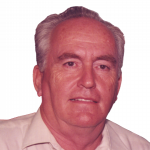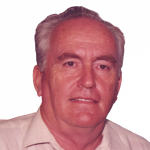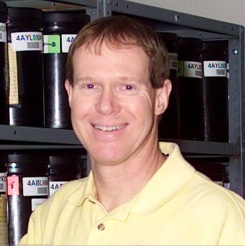Day 2 :
Keynote Forum
Ernest Berkman
Ernest Berkman, Emerald Exploration Consultants Inc., Canada
Keynote: Regional geology and petroleum potential of Cuba, Florida, and the Bahama Bank utilizing public domain data
Time : 10:00-10:45

Biography:
Ernest Berkman graduated from the Colorado School of Mines, Geophysical Engineer, 1958. He worked for Mobil Oil for 20 years and then started EMEX. At EMEX, his experience includes prospect analysis and regional geological/geophysical studies including reflection, gravity, magnetics, magnetotellurics (MT), refraction analysis, in North America and worldwide; plus a lot of shallow seismic for coal mine development and site characterization. Interpretation background includes site characterization, and technical writing, modeling, quality control, project, and team management, industrial teaching, and mentoring. He has been a member of the SEG since 1955.
Abstract:
Regional geology and petroleum potential of Cuba, Florida, and the Bahama Bank utilizing public domain data
Ernest Berkman
Emerald Exploration Consultants, Inc., Canada
Abstract
Our purpose is to present the findings and map products generated from public domain sources, found within the area surrounding Cuba, Florida, and the Bahama Bank. The research concept began with a recent advertisement for a seismic survey in the waters off the northwest coast of Cuba. Work in progress in the Yucatan basis and an internet/literature search of Florida were utilized. This presentation includes an introduction, followed by discussions of the geologic setting, plate tectonics, geothermal regime, satellite imagery, and ancillary data, of each area and concludes with a comparative discussion. Our analysis clearly confirms that regional scale geological mapping and seismic, gravity and magnetic data, along with plate tectonic implications, satellite imagery analysis, and ancillary data; give indications of the presence of oil in each area. All three areas contain sedimentary rocks of Paleozoic, Jurassic, and Cretaceous age, which are considered to be prospective for hydrocarbon accumulation since they either produce or have definitive shows in the areas discussed. Published reserve estimates are given. These basins are underlain with differing basement, associated with several tectonic plates; which may relate to the different grades of prospectivity
Keynote Forum
Habibullo I Abdussamatov
Habibullo I Abdussamatov, Pulkovo observatory of the RAS, Russia
Keynote: The solar irradiance defines the climate

Biography:
Habibullo I Abdussamatov is the Head of the Space Research Laboratory at the Pulkovo Observatory and head of the Russian-Ukrainian project Astrometria on the Russian Segment of the International Space Station. He holds two patents for scientific inventions and is the author of more than 160 scientific publications.
Abstract:
The solar irradiance defines the climate The climate system depends at an extremely complex set of long-term (≥20 years) physical processes in the ocean-land-atmosphere system, which, in turn, is influenced by diverse, mainly quasi-bicentennial variation of the total solar irradiance (TSI). If we take into account only by direct impact of quasi-bicentennial variations TSI order ~0.4%, the resulting increments of the planetary temperature are small (~0.3K); however, they are extremely important as a triggering mechanism of subsequent multiple feedback effects, which cause a significant change in the magnitude of the Earth's Bond albedo, the content of greenhouse gases in the atmosphere, and the transmission of the atmospheric transparency window. The direct effect of the quasi-bicentennial variations of the TSI accounts for about 25-30% of the observed change in the planetary temperature, and the remaining of the temperature change are determined practically by multiple influences secondary feedback effects. Quasi-bicentennial cyclic variations of TSI along with very important successive multiple influences of the feedback effects are the main fundamental cause of corresponding alternations of climate variation from warming to the Little Ice Age and by the main factor that controls the climate system. The long-term (≥20 years) equilibrium energy state of the Earth determines the practical stability of the climate. However, since ~1990, the Sun has been in the declining phase of the quasi-bicentennial variation in TSI. The observed the practically proportional decrease in the average annual TSI portion absorbed by the Earth since ~1990 has not been compensated by a decrease in the average annual energy radiated into space due to the thermal inertia of the oceans. Since ~1990, the Earth radiates more energy back to space than it absorbs. As a result, the Earth has, and will continue to have, a negative average annual energy balance and a long-term adverse thermal condition. Such gradual loss in the total amount of the solar energy accumulated by the oceans during the twentieth century has resulted at the beginning of a epoch of a new Little Ice Age after the maximum phase of solar cycle 24. In fact, the warming ended in 2016. The start of the solar Grand minimum is anticipated in the solar cycle 27±1 in 2043±11 and the beginning of the phase of deep cooling in the new Little Ice Age in 2060±11. The solar irradiance defines the climate both of the Earth and other planets of the Solar system. The gradual weakening of the Gulf Stream power will result in even stronger cooling in the zone of its action.
- Geosciences | Climate Change | Remote Sensing | Applications of Remote Sensing | Green Energy | Geology | Geophysics | Environmental Geology | Petrology and Mineralogy|GIS
Location: Douglas Suite

Chair
Ernest Berkman
Emerald Exploration Consultants, Inc., USA

Co-Chair
John Faundeen
John Faundeen, EROS Center, USA
